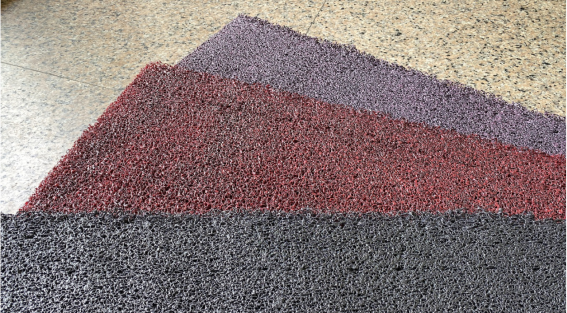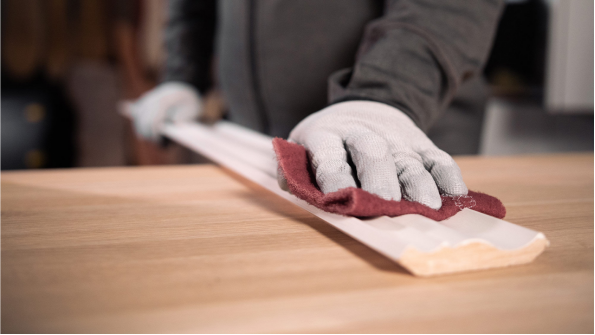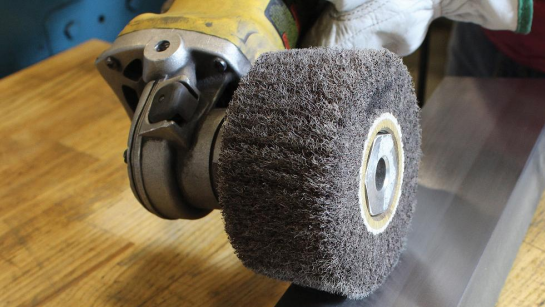Non-woven abrasives have gained popularity in various industries due to their versatility and effectiveness in surface preparation, cleaning, and finishing applications. Whether you’re working on wood, metal, or other surfaces, non-woven abrasives, such as non-woven sheets, non-woven rolls, and non-woven discs, can provide excellent results. In this article, we will explore the role of non-woven abrasives, the components of these abrasives, and how to choose and use non-woven abrasives effectively.
The Importance of Non-Woven Abrasives
Non-woven abrasives are abrasive products made from a combination of synthetic fibers, abrasive grains, and resins. They are designed to offer a non-aggressive, consistent, and uniform cutting action while minimizing heat generation and surface damage. Non-woven abrasives are available in various forms, including wheels, sheets, rolls, and discs, making them suitable for a wide range of applications.
These abrasives are commonly used for surface preparation tasks such as deburring, blending, cleaning, and finishing. Non-woven sheets, rolls, and discs are particularly useful when a specific form factor is required. For example, non-woven sheets are ideal for manual sanding or for use with sanding blocks, while non-woven rolls offer flexibility and are suitable for wrapping around contoured surfaces. Non-woven discs are commonly used with power tools such as angle grinders or random orbital sanders for efficient material removal and finishing.
Components of Non-Woven Abrasives
Grit Designation and Comparable Grit Ranges
When selecting non-woven abrasives, understanding the grit designation and comparable grit ranges is crucial. Grit refers to the size of the abrasive particles embedded in the non-woven material. The grit designation typically follows a standardized system, such as the FEPA (Federation of European Producers of Abrasives) or ANSI (American National Standards Institute) grit scales.
The grit size determines the level of aggressiveness and the finish achieved. Lower grit numbers indicate coarse abrasives for heavy material removal, while higher grit numbers represent finer abrasives for polishing and finishing. For example, a lower grit range, such as 60 to 100, is suitable for aggressive material removal, while a higher grit range, such as 400 to 600, provides a finer finish.
Choosing Products for Specific Applications
To choose the right non-woven abrasive product, consider your specific application needs. Different tasks require different abrasive configurations, densities, and compositions. Manufacturers produce a wide range of non-woven abrasives, including sheets, rolls, and discs, with varying levels of flexibility, cutting action, and durability.
For instance, if you require a flexible and conformable abrasive for curved or contoured surfaces, consider using non-woven sheets or rolls with a lower density. On the other hand, if you need a more rigid abrasive for flat or large surfaces, non-woven discs or rolls with a higher density would be appropriate. It’s essential to consider factors such as the material being worked on, the desired finish, and the aggressiveness required to select the most suitable product.
Maximizing the Efficiency of Non-Woven Wheels
Non-woven wheels are commonly used in various applications due to their versatility and ease of use. Here are some tips for maximizing their effectiveness:
Wheel Direction: When using non-woven wheels, ensure you are moving the wheel in the appropriate direction. This is usually indicated by arrows on the wheel itself or the equipment’s user manual. Following the correct wheel direction ensures optimal cutting action and prevents premature wear.
Wheel Speed: The speed at which the non-woven wheel rotates is crucial for achieving desired results. High wheel speeds are typically used for material removal, while lower speeds are suitable for finishing and polishing. Always refer to the manufacturer’s recommendations for the recommended wheel speed range for your specific application.
Pressure: Applying the right amount of pressure is essential for effective material removal and achieving the desired finish. Too much pressure can lead to excessive heat generation and premature wear, while too little pressure may result in ineffective cutting action. Experiment with different pressure levels to find the optimal balance for your application.
Feed Speed: When using non-woven wheels, the feed speed refers to the rate at which the workpiece is moved against the abrasive. A consistent and controlled feed speed ensures uniform results and prevents uneven wear on the abrasive. Adjust the feed speed based on the material being worked on and the desired finish.
Oscillation: In some applications, oscillating the non-woven wheel back and forth can enhance the cutting action and prevent localized heat buildup. This technique is particularly useful for removing surface defects or blending edges. Experiment with oscillation patterns to find the most effective approach for your specific task.
Lubricants: Depending on the application, using lubricants can enhance the performance and lifespan of non-woven abrasives. Lubricants reduce friction and heat, preventing the abrasive from clogging and ensuring a smooth cutting action. Some common lubricants include water, oils, and specialized cutting fluids. Refer to the manufacturer’s recommendations for the appropriate lubricant to use with your non-woven abrasives.
Conclusion
In conclusion, non-woven abrasives offer a versatile and effective solution for surface preparation, cleaning, and finishing applications. Understanding the role of non-woven abrasives, the components that make up these abrasives, and how to choose and use them effectively is crucial for achieving optimal results. By following the guidelines mentioned above and considering your specific application needs, you can maximize the performance and lifespan of non-woven abrasives in your work.



